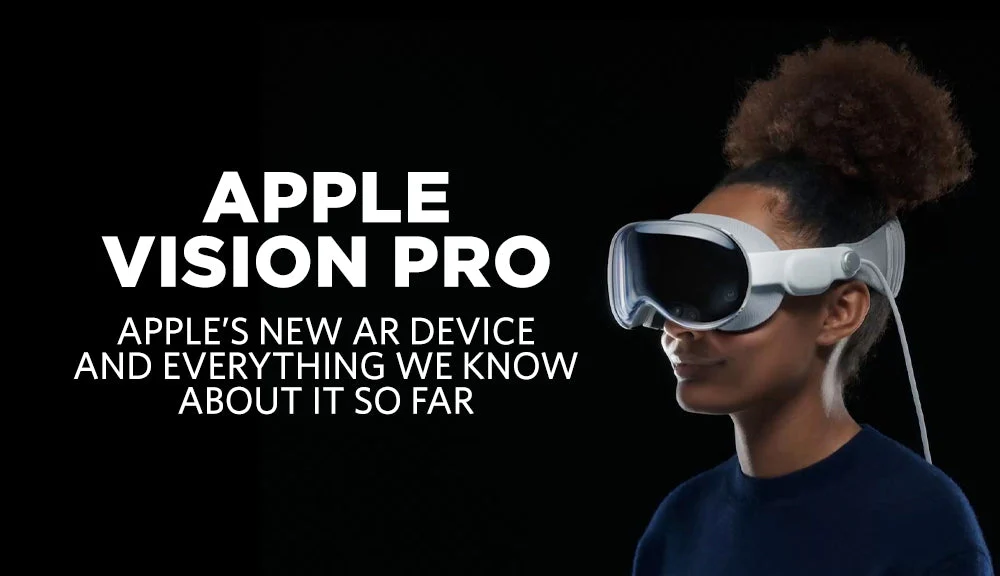Introduction: In the domain of technological innovation, Apple has continuously pushed the boundaries of what we believe is possible. With the release of their highly anticipated Vision Pro Headset, the tech behemoth is poised to transform not just how we perceive the world, but also how our brains interact with it. This cutting-edge technology claims to provide an immersive augmented reality (AR) experience.
Immersive Experiences and Cognitive Engagement
The Vision Pro Headset is expected to offer users a seamless blend of virtual and real-world environments, thanks to its advanced AR capabilities. By overlaying digital information onto the physical world, users can interact with and manipulate virtual objects as if they were tangible. This level of immersion has the potential to deeply engage our cognitive faculties, prompting us to question how our brains will adapt to this new mode of interaction.
Neuroplasticity and Adaptation
One of the most fascinating aspects of the human brain is its capacity for neuroplasticity – the ability to reorganize itself in response to new experiences. As users don the Vision Pro Headset and navigate through AR-enhanced environments, their brains may undergo significant rewiring to accommodate this novel mode of perception. Areas of the brain responsible for processing visual information, spatial navigation, and attention may undergo adaptation as they integrate virtual elements into the perceptual landscape.
Enhanced Learning and Memory Formation
The immersive nature of AR experiences facilitated by the Vision Pro Headset could also have profound implications for learning and memory formation. Studies have shown that multisensory experiences enhance cognitive processes such as learning retention and information recall. By engaging multiple sensory modalities simultaneously – including visual, auditory, and tactile stimuli – AR environments created by the Vision Pro Headset may optimize the conditions for encoding and storing new information in the brain.
Potential Challenges and Considerations
While the potential benefits of Apple’s Vision Pro Headset on cognitive functions are exciting, it’s essential to consider potential challenges and ethical implications. Prolonged exposure to immersive AR experiences may lead to issues such as sensory overload, distraction, and even addiction in susceptible individuals. Moreover, the long-term effects of intensive AR usage on brain health and development remain largely unknown and warrant further investigation.
Conclusion
Apple’s Vision Pro Headset represents a significant leap forward in the realm of augmented reality, promising users unparalleled immersion and interactivity. As we eagerly anticipate its release, it’s crucial to recognize the potential impact this technology may have on our cognitive functions. By understanding how our brains adapt to immersive AR experiences, we can harness the transformative power of technology while mitigating potential risks. As with any technological advancement, responsible usage and ongoing research will be essential in maximizing the benefits of the Vision Pro Headset while safeguarding our cognitive well-being.
FAQ: How does the Apple Vision Pro Headset differ from existing AR devices?
Answer: The Vision Pro Headset promises a more immersive AR experience by seamlessly blending virtual and real-world environments, offering advanced features like spatial mapping and precise object tracking.
FAQ: Can prolonged usage of the Vision Pro Headset impact brain health?
Answer: While the long-term effects are still being studied, prolonged exposure to immersive AR experiences may lead to issues such as sensory overload and potential addiction in susceptible individuals.
FAQ: Will using the Vision Pro Headset improve cognitive functions like learning and memory?
Answer: The multisensory nature of AR experiences facilitated by the headset could enhance cognitive processes like learning retention and memory formation by providing optimal conditions for information encoding.
FAQ: What ethical considerations should users be aware of when using the Vision Pro Headset?
Answer: Users should consider potential challenges such as distraction and the ethical implications of AR technology, including privacy concerns and the impact on real-world interactions.
FAQ: How might the Vision Pro Headset influence the brain’s neuroplasticity?
Answer: The immersive AR experiences provided by the headset could prompt neuroplastic changes in the brain as it adapts to integrating virtual elements into the perceptual landscape, potentially reshaping areas involved in visual processing and spatial navigation.


